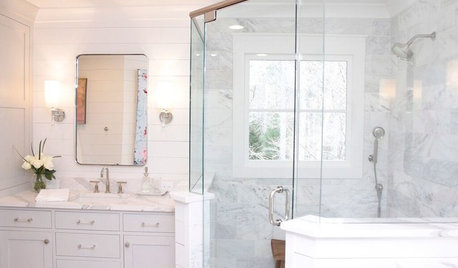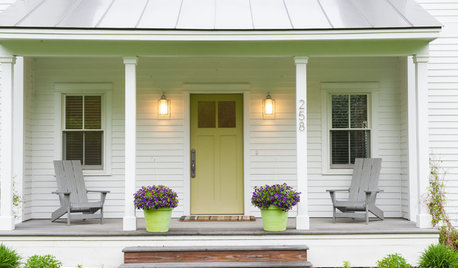'Near Tears in HD' VOLUME 2
Pat z6 MI
14 years ago
Related Stories

MODERN ARCHITECTUREHouzz Tour: Sensitive Minimalism in the Arizona Desert
Beautifully framed views and a design that sits lightly on the land make for a thoughtfully integrated modern home near Tucson
Full Story
ROOM OF THE DAYRoom of the Day: Ditching the Tub for a Spacious Shower
A Georgia designer transforms her master bathroom to create a more efficient and stylish space for 2
Full Story
HOUZZ TOURSMy Houzz: A Paean to the 1950s and '60s in Pennsylvania
With vintage furniture, a sunken den and pristine original details, this home is a true homage to midcentury style
Full Story
HOUZZ TOURSHouzz Tour: Surfing Inspires a Metal-Happy San Francisco Loft
Surfboards, graphic wallpaper, a propeller and a little pink push this apartment out of obscurity
Full Story
HOUZZ TOURSMy Houzz: A Prefab Modern Farmhouse Rises in Vermont
A prefab borrows from the simplicity of barns to suit its family and the Vermont countryside
Full Story
HOUZZ TOURSHouzz Tour: Updates Honor a 1930s Cottage's History
The facade stays true to the original, but inside lie a newly opened layout, higher ceilings and 600 more square feet of space
Full Story
REMODELING GUIDESLaminate Floors: Get the Look of Wood (and More) for Less
See what goes into laminate flooring and why you just might want to choose it
Full Story
KITCHEN DESIGN8 Kitchen Design Tips for Foodies
If you own at least one pricey knife and have a slew of kitchen tools, you’ll want to read this
Full Story
ARCHITECTUREHave Your Flat Roof and Your Snow Too
Laboring under the delusion that flat roofs are leaky, expensive and a pain to maintain? Find out the truth here
Full Story
STANDARD MEASUREMENTSThe Right Dimensions for Your Porch
Depth, width, proportion and detailing all contribute to the comfort and functionality of this transitional space
Full StoryMore Discussions






Related Professionals
Manorville Landscape Architects & Landscape Designers · Richmond Heights Landscape Architects & Landscape Designers · Canyon Lake Landscape Contractors · College Park Landscape Contractors · Elkridge Landscape Contractors · Farmington Landscape Contractors · Fort Hunt Landscape Contractors · Holland Landscape Contractors · Pahrump Landscape Contractors · Soddy Daisy Landscape Contractors · Vacaville Landscape Contractors · Wilton Landscape Contractors · Winchester Landscape Contractors · Buena Park Swimming Pool Builders · Redding Swimming Pool Builders